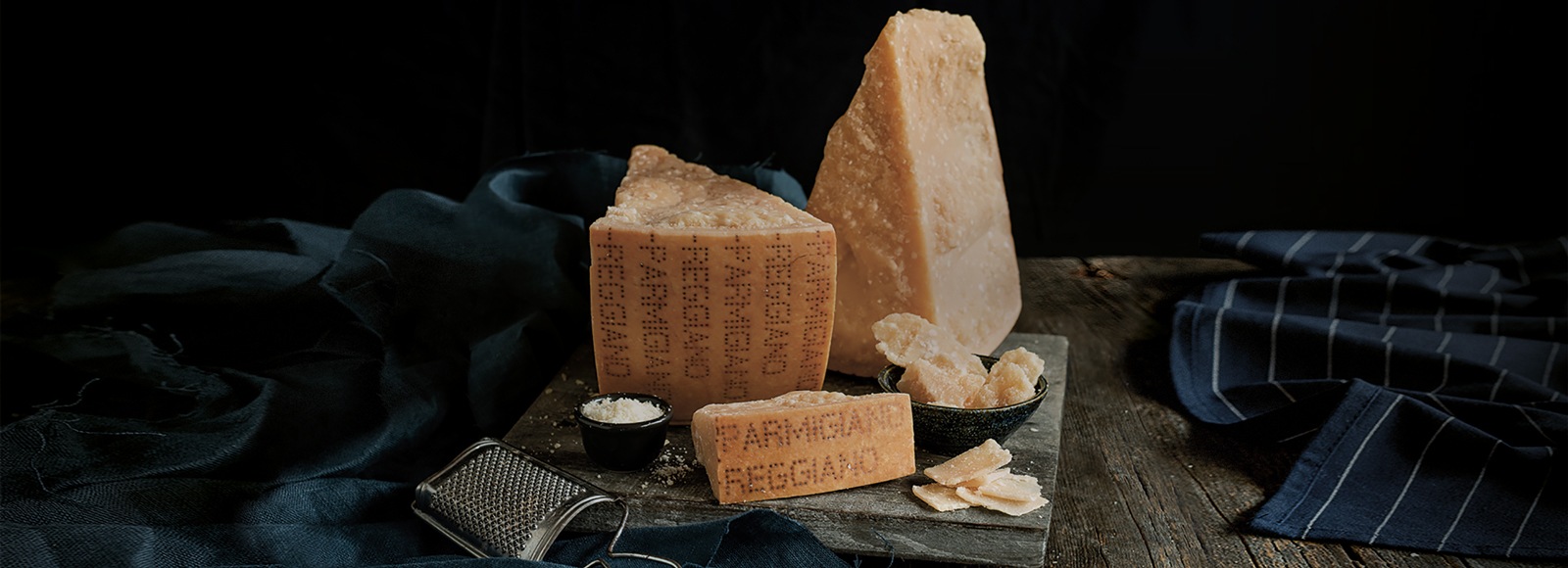Parmigiano Reggiano must be made with completely natural ingredients, using a centuries-old process, in a geographical area of Italy so carefully defined that you can make Parmigiano Reggiano in one area which comprises the provinces of Parma, Reggio Emilia, Modena, Mantua (on the right bank of the Po river) and Bologna (on the left bank of the Reno river), in compliance with strict standards. It is so good that chefs and nutritionists consider it a practically perfect food, and has become a cultural symbol of Italy’s rich heritage of artisanal traditions and superior quality.
Here are a few facts about this
extraordinary cheese
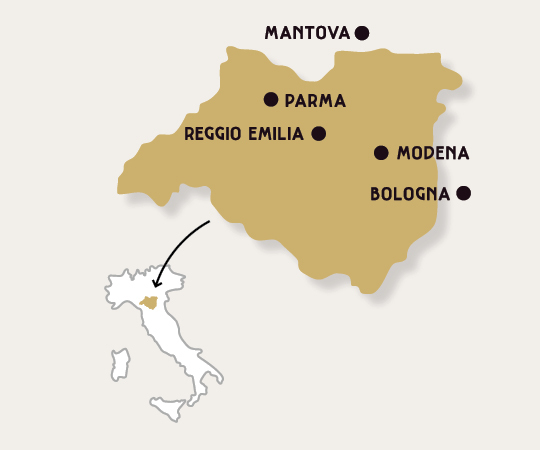
FACT NO. 1
Parmigiano Reggiano can only be made in Italy.
‘PARMIGIANO REGGIANO’ A JOURNEY OF A THOUSAND YEARS
In the Middle Ages the Benedictine and Cistercian monks, committed to finding a cheese that could last long, were the first producers: using the salt from the Salsomaggiore salt mines and the milk of the cows bred in the granges, i.e. the farms belonging to the monasteries, the monks obtained a dry paste cheese in large wheels suitable for long preservation. Parmigiano Reggiano is produced exclusively in the provinces of Parma, Reggio Emilia, Modena, Bologna to the left of the Reno river, and Mantua to the right of the Po river: this is the area hosting the farms where the cattle are mainly fed on locally grown forage. The feeding of cattle complies with the norms of a strict specification that bans the use of silage, fermented feeds and animal flour.
In contrast, generic hard cheeses can be made anywhere. Some are made in the US, others are made in Argentina, Russia, Ukraine, and other countries, therefore the terrain can vary greatly. Also, other cheeses are not subject to the strict regulation, aging requirements, or quality standards of Parmigiano Reggiano.
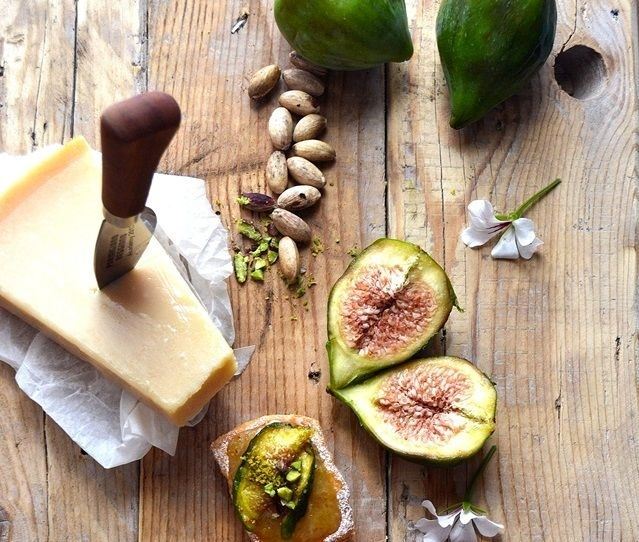
FACT NO. 2
The experience of Parmigiano Reggiano can’t be matched.
ENJOY UNIQUE, RICH, AND COMPLEX FLAVORS
Parmigiano Reggiano is aged longer than ordinary cheeses, and aging is one of the reasons for its rich flavor and granular texture. Parmigiano Reggiano has a sharp, complex fruity/nutty taste with a strong savory flavor and a slightly gritty texture. It has a fragrant aroma that is spicy but not piquant – enhancing the flavor of other foods when used as an ingredient, or offering a delightful sensory experience when paired with select wines or other foods.
Other hard cheeses can have a bitter taste and typically lack the complexity that makes Parmigiano Reggiano so admired by food experts and cheese lovers worldwide.

FACT NO. 3
Parmigiano Reggiano is made with three natural ingredients.
NO PRESERVATIVES OR ARTIFICIAL ADDITIVES
The only three ingredients allowed to make Parmigiano Reggiano are:
MILK
The milk used for Parmigiano Reggiano can only come from cows that are mainly fed locally grown forage, grass and hay. In contrast, according to FDA rules, American hard cheeses don’t have to be made from fresh whole milk. Reconstituted dry milk, skim milk, and/or cream also can be used. Bleaching the milk is allowed, too.
SALT
Parmigiano Reggiano includes salt, which is absorbed by the cheese while submerged for 20 days in brine tanks saturated to near total salinity.
RENNET
Rennet is an enzyme that helps catalyze the fermentation of the cheese and is considered an animal product. Cheeses that are not regulated like Parmigiano Reggiano, have been found to contain additives, like cellulose.

FACT NO. 4
Parmigiano Reggiano is packed with healthy nutrients.
A GREAT SOURCE OF VITAMINS AND MINERALS
Because of its simple and natural ingredients and its unique aging process, Parmigiano Reggiano is an excellent source of nutrients such as calcium, amino acids, protein, and vitamins.
A single ounce of Parmigiano has 9g of protein (2g more than beef), and 321mg of calcium (nearly 10 times more than milk). It has 12mg of magnesium (more than salmon), 28mg of potassium (about a third as much as banana) and 0.12mg of vitamin A (about the same as raw carrots). Also, Parmigiano Reggiano is rich in zinc and iron, copper and manganese, biotin and vitamin B6 – making it a veritable nutritional supplement.
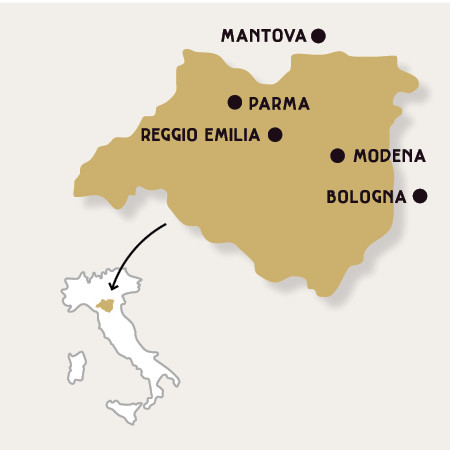
FACT NO. 1
Parmigiano Reggiano can only be made in Italy.
‘PARMIGIANO REGGIANO’ A JOURNEY OF A THOUSAND YEARS
In the Middle Ages the Benedictine and Cistercian monks, committed to finding a cheese that could last long, were the first producers: using the salt from the Salsomaggiore salt mines and the milk of the cows bred in the granges, i.e. the farms belonging to the monasteries, the monks obtained a dry paste cheese in large wheels suitable for long preservation. Parmigiano Reggiano is produced exclusively in the provinces of Parma, Reggio Emilia, Modena, Bologna to the left of the Reno river, and Mantua to the right of the Po river: this is the area hosting the farms where the cattle are mainly fed on locally grown forage. The feeding of cattle complies with the norms of a strict specification that bans the use of silage, fermented feeds and animal flour.
In contrast, generic hard cheeses can be made anywhere. Some are made in the US, others are made in Argentina, Russia, Ukraine, and other countries, therefore the terrain can vary greatly. Also, other cheeses are not subject to the strict regulation, aging requirements, or quality standards of Parmigiano Reggiano.
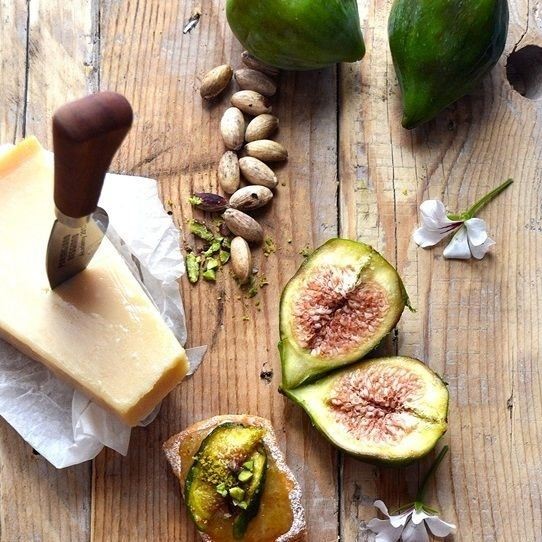
FACT NO. 2
The experience of Parmigiano Reggiano can’t be matched.
ENJOY UNIQUE, RICH AND, COMPLEX FLAVORS
Parmigiano Reggiano is aged longer than ordinary cheeses, and aging is one of the reasons for its rich flavor and granular texture. Parmigiano Reggiano has a sharp, complex fruity/nutty taste with a strong savory flavor and a slightly gritty texture. It has a fragrant aroma that is spicy but not piquant – enhancing the flavor of other foods when used as an ingredient, or offering a delightful sensory experience when paired with select wines or other foods.
Other hard cheeses can have a bitter taste and typically lack the complexity that makes Parmigiano Reggiano so admired by food experts and cheese lovers worldwide.
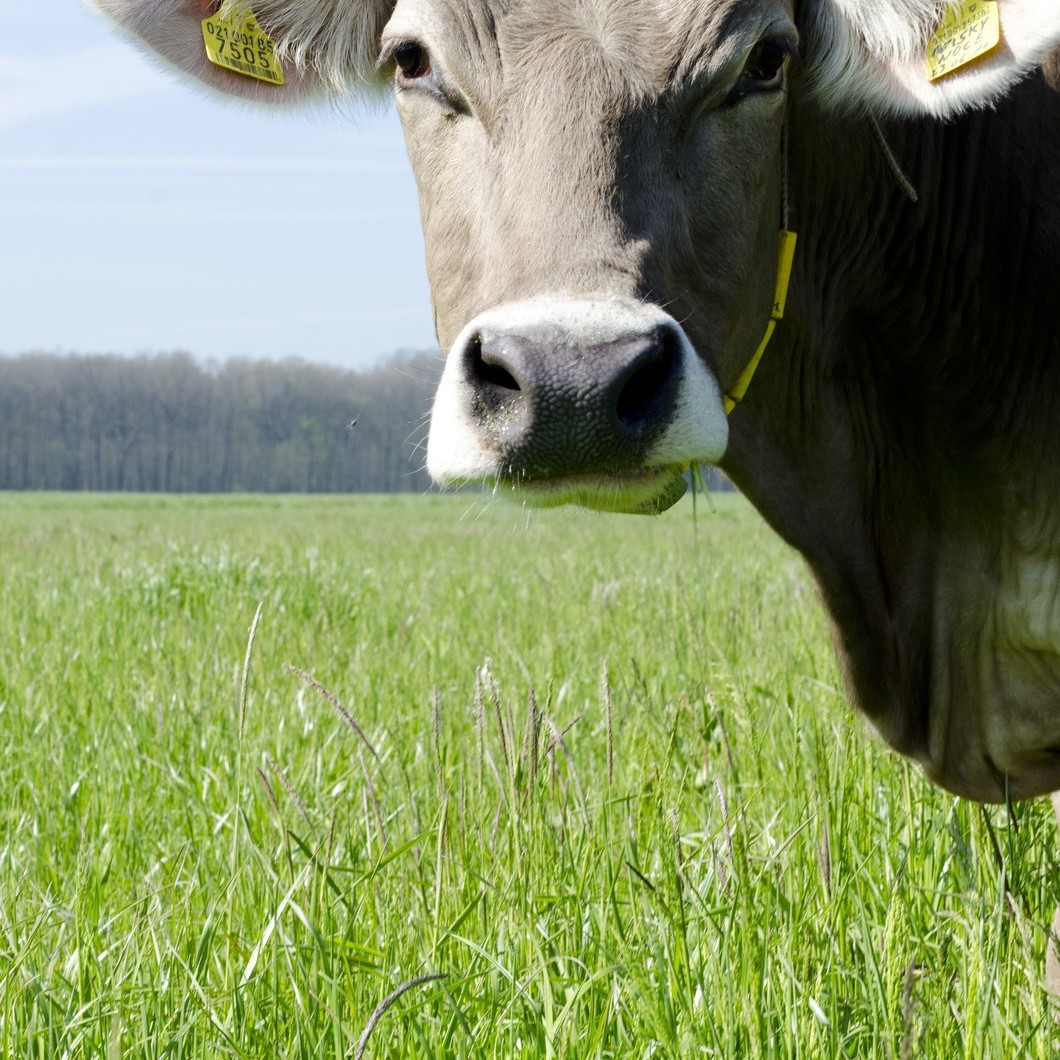
FACT NO. 3
Parmigiano Reggiano is made with three natural ingredients.
NO PRESERVATIVES OR ARTIFICIAL ADDITIVES
The only three ingredients allowed to make Parmigiano Reggiano are:
MILK
The milk used for Parmigiano Reggiano can only come from cows that are mainly fed locally grown forage, grass and hay. In contrast, according to FDA rules, American hard cheeses don’t have to be made from fresh whole milk. Reconstituted dry milk, skim milk, and/or cream also can be used. Bleaching the milk is allowed, too.
SALT
Parmigiano Reggiano includes salt, which is absorbed by the cheese while submerged for 20 days in brine tanks saturated to near total salinity.
RENNET
Rennet is an enzyme that helps catalyze the fermentation of the cheese and is considered an animal product. Cheeses that are not regulated like Parmigiano Reggiano, have been found to contain additives, like cellulose.

FACT NO. 4
Parmigiano Reggiano is packed with healthy nutrients.
A GREAT SOURCE OF VITAMINS AND MINERALS
Because of its simple and natural ingredients and its unique aging process, Parmigiano Reggiano is an excellent source of nutrients such as calcium, amino acids, protein, and vitamins.
A single ounce of Parmigiano has 9g of protein (2g more than beef), and 321mg of calcium (nearly 10 times more than milk). It has 12mg of magnesium (more than salmon), 28mg of potassium (about a third as much as banana) and 0.12mg of vitamin A (about the same as raw carrots). Also, Parmigiano Reggiano is rich in zinc and iron, copper and manganese, biotin and vitamin B6 – making it a veritable nutritional supplement.
